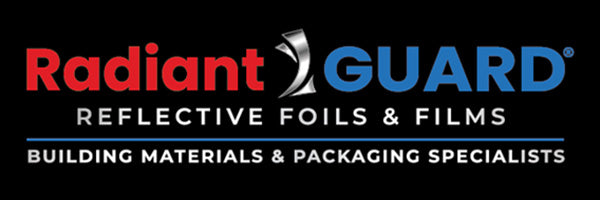The following terms and definitions are important for understand radiant barrier and reflective foil insulation products.
ASTM: ASTM International, originally known as the American Society for Testing and Materials, is an international standards organization that develops and publishes voluntary consensus technical standards for a wide range of materials, products, systems, and services.
Emissivity: The ratio of the radiant heat emitted by a surface. ALL materials have emissivity's ranging from 0% to 100%. The lower the emittance percentage of a material, the lower the amount of radiant heat radiated from its surface. The naturally low emissivity property of aluminum facing an air space results in very low emittance of heat from itself; it does not radiate much of its own heat from itself. This naturally low emissivity property makes aluminum ideal for use in radiant barriers.
Fire Rating: There are two organizations that define fire ratings for building materials; The National Fire Protection Association (NFPA) and The Uniform Building Code (UBC). NFPA's highest fire-resistance rating provided is "Class A." UBC's highest fire-resistance rating provided is "Class 1." Fire ratings of radiant barriers are determined by ASTM fire test E84 with a required mounting method E2599. Our RadiantGUARD Xtreme radiant barrier has passed the required ASTM fire test and achieved both Class A and Class 1 fire-resistance ratings.
Flame Spread: Indicates the relative rate at which flame will spread over the surface of a material, as compared with flame spread on asbestos-cement board (rated 0) and on red oak (rated 100).
Knee Wall: Typically a short wall, usually under three feet in height. The term is derived from the association with the vertical location of the human knee. Also commonly known as a half-wall, or partial-wall and commonly found in attics where vaulted ceilings reach up into the attic space higher than other ceilings.
Mullen Burst Strength: Measurement of the amount of pressure required to puncture a sheet of material and is expressed commonly in pounds per square inch (psi).
Radiant Barrier: Per the Department of Energy (DOE), a product classified as a "radiant barrier" must have a high reflectance of 90% or more and a low emittance of 10% or less. If it doesn't reflect at least 90% of the radiant heat, it cannot be called a "radiant barrier."
Reflectivity: The reflectivity property of reflective surface facing a heat source across an air space allowing the aluminum to REFLECT radiant heat back to the direction from which it came. Represented as a percentage.
Smoke Development: A measurement of the obscuration of light by the combustion product stream.
Tensile Strength: The stress at which a material breaks or permanently deforms.
Wall Plate: Sometimes known as the top plate or ceiling plate, the wall plate is typically a 2 X 4 that is nailed along the top of the wall studs forming a wall.



